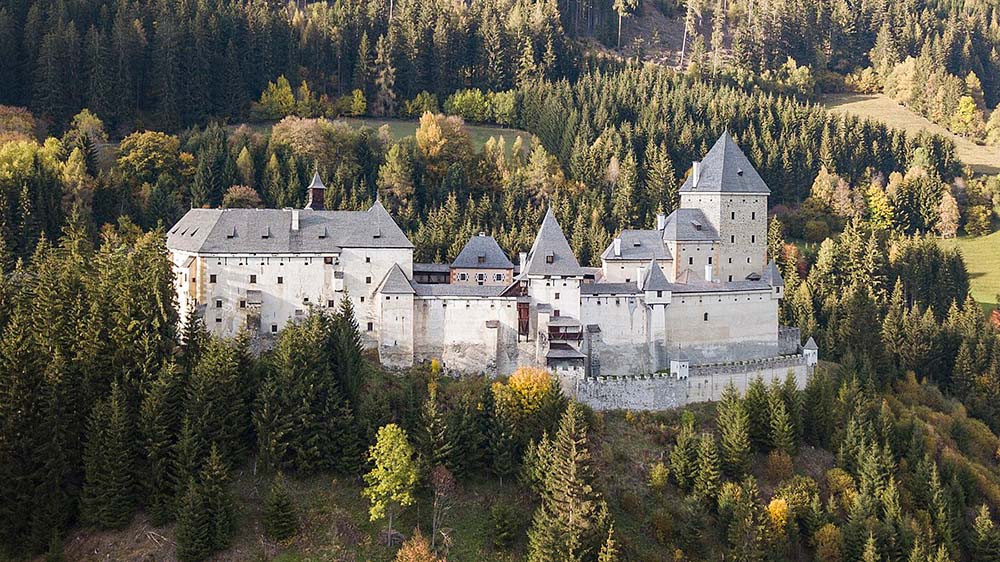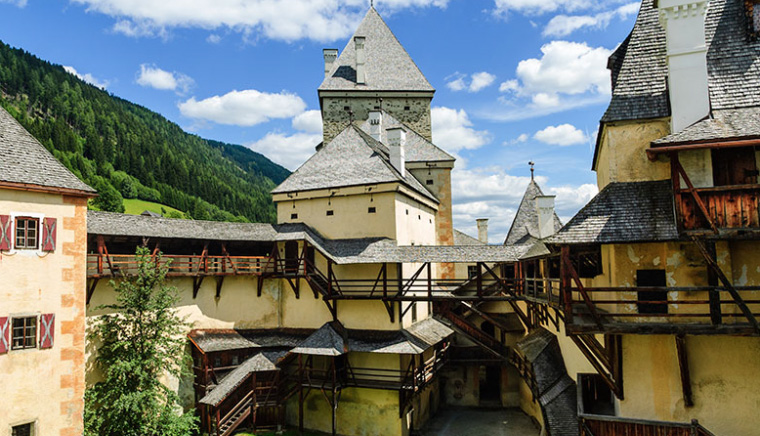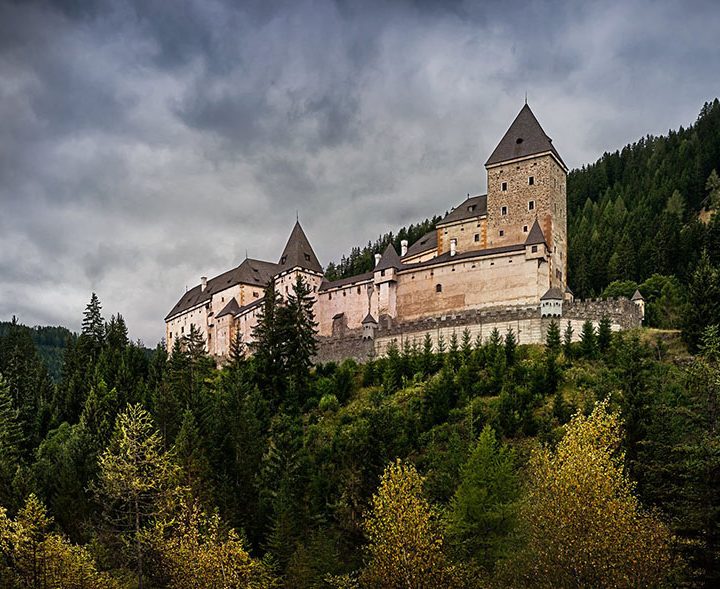Moosham Castle
Moosham Castle, located in the scenic Lungau region of Austria, is one of Europe’s most enigmatic and storied castles. Known for its tumultuous history and striking medieval architecture, the castle offers visitors a glimpse into Austria’s fascinating past. Its impressive structure and well-preserved rooms evoke tales of ancient noble families, feudal justice, and, perhaps most famously, the chilling witch trials of the 17th century. As a remarkable piece of European heritage, Moosham Castle is admired not only for its historical importance. It is also admired for the cultural intrigue that surrounds it.
Location of Moosham Castle
Moosham Castle, or Schloss Moosham, is situated near the town of Unternberg, in the state of Salzburg, Austria. It rests on a gentle hill within the picturesque Lungau district, an area renowned for its natural beauty. This beauty is characterized by sweeping alpine valleys, thick forests, and dramatic mountain vistas. The castle’s elevated position provides expansive views of the surrounding countryside, adding to its sense of grandeur and isolation.
Its strategic location was chosen for defensive purposes. This positioning ensured it could oversee and protect the region from potential invaders. Located approximately 100 kilometers south of Salzburg, Moosham Castle is accessible via Austria’s well-maintained roads. This accessibility has made it a popular day trip for visitors to Salzburg and surrounding areas. The Lungau region, designated as a UNESCO Biosphere Reserve, further enhances the appeal of Moosham Castle. It draws tourists who seek to experience both Austria’s natural and historical wonders in one journey.

History of Moosham Castle
The origins of Moosham Castle date back to the 12th century, when it was first established as a defensive stronghold for the ruling archbishops of Salzburg. Initially, it was constructed as part of a network of fortifications across the region. In time, the castle played a significant role in the protection and administration of Salzburg’s territorial claims. During the Middle Ages, Moosham was expanded and fortified, evolving from a military outpost to a center of feudal power and justice.
In the 17th century, Moosham Castle became infamous as the site of numerous witch trials and brutal executions. Salzburg, during this time, was swept up in the hysteria of the European witch hunts. Between 1675 and 1690, under the rule of the Prince-Bishops, over a hundred people were prosecuted and executed for witchcraft within Moosham’s walls. This dark period left a lasting mark on the castle’s legacy. Tales of ghostly apparitions and supernatural occurrences have continued to circulate in local folklore.
The castle’s function shifted again in the 18th century, as it was repurposed as an administrative center. By the 19th century, Moosham Castle had fallen into disrepair, a fate suffered by many medieval fortresses in Europe. The castle’s remote location and reduced significance led to its neglect until the end of the 19th century. It was then that Count Johann Nepomuk Wilczek, an Austrian aristocrat and noted art collector, took an interest in its preservation. Count Wilczek undertook significant restoration efforts to protect the castle’s structure. These efforts breathed new life into Moosham, transforming it into a residence and museum.

Current status
Today, Moosham Castle stands as a well-maintained historical site, open to the public for guided tours and educational events. It remains privately owned, as the Wilczek family continues to care for the estate. This has ensured that it remains accessible for visitors and students of history alike. The castle’s impressive stone walls, Romanesque arches, and gothic turrets have been preserved. This preservation allows modern visitors to experience the architecture much as it would have appeared centuries ago.
During a visit to Moosham Castle, guests are invited to explore its collection of medieval artifacts. This collection includes period furniture, weaponry, and art that reflect the tastes and lifestyles of former inhabitants. The rooms have been restored to showcase medieval and Renaissance-era décor, offering a glimpse into the lives of the nobility who once lived there. One of the castle’s main attractions is the judicial chamber. This room once served as the site for trials. Additionally, visitors can see the dungeon, which served as a holding area for those accused during the witch trials.
Special events, such as historical reenactments and cultural festivals, are regularly held at Moosham Castle. These events further immerse visitors in its unique heritage. Educational tours are available, providing in-depth information about the castle’s architecture, history, and the infamous trials that took place there. Seasonal exhibitions are occasionally hosted to showcase different aspects of the castle’s history. These exhibitions highlight its role in Austrian culture.
For those interested in the supernatural, Moosham Castle is also reputed to be haunted. Local legends tell of ghostly figures that roam the halls, particularly those connected to the witch trials of the 17th century. Paranormal enthusiasts often visit in hopes of experiencing these hauntings firsthand. The castle’s atmosphere, with its dim lighting and stone corridors, adds to the sense of mystery.
Admission
Community features
Castle features
Video
Location
Official website
Follow Moosham Castle
Featured listings














